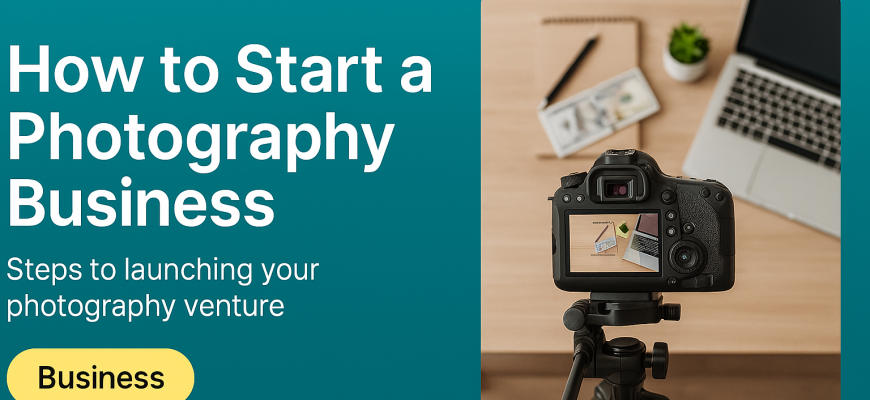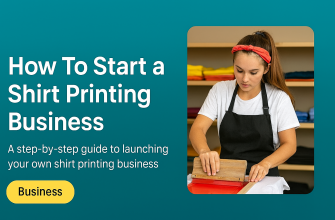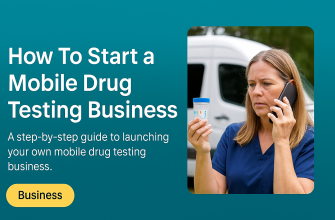Starting a photography business is an exciting journey – one that transforms your passion into a profitable, purposeful career. As women entrepreneurs, we often balance creativity with responsibilities, but with the right plan and mindset, you can build a thriving photography business. Whether you’re a complete beginner or a hobbyist ready to go pro, this guide will walk you through the essential steps. From finding your niche (be it dreamy weddings, vibrant portraits, bold branding shoots, or candid lifestyle sessions) to booking your first clients, you’ll get practical advice, encouragement, and resources tailored to women in the U.S. ready to make their mark. Let’s dive in!
- Step 1: Identify Your Niche
- Step 2: Create a Solid Business Plan
- Step 3: Understand Legal Requirements (Licenses, Taxes, Insurance)
- Step 4: Budget for Startup Costs (Gear, Software, Marketing)
- Step 5: Set Your Pricing and Package Your Services
- Step 6: Build Your Personal Brand and Online Presence
- Step 7: Find Clients and Create a Referral Pipeline
- Step 8: Utilize Tools and Platforms to Manage Your Workflow
- Conclusion: You’ve Got This!
Step 1: Identify Your Niche
The first step is figuring out what kind of photography business you want. Defining your niche – and the types of clients you want to serve – will help focus your efforts and attract the right people. Ask yourself which photography genre excites you most and matches your strengths. Here are a few popular niches (you can mix and match, but starting with a focus is helpful):
-
Wedding Photography: Perfect if you love capturing love stories and can handle fast-paced event days. Wedding photographers shoot one of the most memorable days of a couple’s life. It’s rewarding but also high-pressure – you need to be organized and creative under time constraints. Many wedding shooters offer packages (like full-day coverage, engagement sessions, albums) and build relationships with venues and planners for referrals. If you enjoy working with people and don’t mind weekends filled with ceremonies and receptions, this could be your niche.
-
Portrait Photography: This niche includes family portraits, newborn photography, maternity shoots, senior pictures, and individual portraits. If you have a knack for making people (especially kids or camera-shy adults) feel comfortable, portrait photography can be very fulfilling. You might set up a small home studio or do on-location shoots at parks or clients’ homes. Portrait sessions often involve selling prints or digital images and can provide repeat business (think annual family photos or milestone events).
-
Branding Photography: Also known as personal branding or commercial portraiture, this niche involves working with entrepreneurs, influencers, and businesses to create images that represent their brand. Instead of traditional portraits for hanging on the wall, branding photos are used in marketing – websites, social media, brochures, etc.. If you love strategizing and storytelling, branding photography lets you collaborate with clients on outfits, locations, and props that showcase their business vibe. Clients will expect mostly digital files optimized for online use, and they often book shoots seasonally to keep content fresh.
-
Lifestyle Photography: Lifestyle photographers capture real-life moments in an artistic way – think of a family baking cookies at home, a newborn snuggling with parents, or an entrepreneur working in her chic office. It’s about storytelling through candid, authentic imagesformat.comformat.com. Lifestyle work is great if you prefer a natural, less-posed style and enjoy working in varied environments. This niche often overlaps with family and branding photography, and it’s become popular as clients seek more genuine, relatable images.
Take some time to explore these niches and see which resonates. You can start broad, but having a clear specialty (or a couple of related ones) helps your marketing tremendously. It allows you to tailor your portfolio and messaging to exactly the clients you want to attract. Remember – choosing a niche doesn’t mean you’re stuck with it forever. As you gain experience, you can evolve or expand into new areas. The key is to start with a focus so you can build a strong brand around it.
Step 2: Create a Solid Business Plan
Turning your photography from hobby to business requires some planning. Don’t worry – this doesn’t have to be a 50-page MBA-style plan. A simple, focused business plan will be your roadmap and keep you on track. It should cover the basics: your niche, target market, services, pricing strategy, marketing ideas, and financial goals. Essentially, it’s answering: “What am I selling, to whom, and how will I succeed?”
Here are a few key components to include in your plan:
-
Vision and Goals: Why do you want to start this business? What do you hope to achieve in 1 year, 3 years, 5 years? Set specific and realistic goals (e.g. “Book 5 paid sessions in my first quarter” or “Earn $X in revenue by end of year one”). Writing down goals gives you something concrete to work toward.
-
Target Client Profile: Describe your ideal client. For instance, maybe it’s newly engaged couples in their 20s for wedding photography, or busy female entrepreneurs needing branding photos. Knowing who you want to serve will guide your branding and marketing.
-
Services and Packages: Outline what services you’ll offer. Will you do only on-location shoots? Offer prints or just digital files? Will you add related services like photo editing workshops or albums? Having this sketched out helps in planning costs and marketing.
-
Marketing Plan: Jot down how you’ll get the word out – e.g. building a website and Instagram presence, attending local networking events, partnering with vendors (more on these later).
-
Financial Plan: List your expected expenses (startup costs, ongoing monthly costs) and how you’ll fund them. Also project how much you’ll charge and how many clients you need to break even and turn a profit. This doesn’t need to be super detailed at first, but have an idea of your pricing (see Step 5) and revenue goals.
The process of creating a business plan is as important as the document itself. It forces you to research and think through how you’ll handle the business side of photography, not just the fun creative side. As Alex often says, “success is 20% talent and 80% strategy.” Your plan can be a simple one-page outline or a more formal document – do whatever helps you feel clear and motivated. And remember, your business plan isn’t set in stone; you can revise it as you learn what works best for you.
Step 3: Understand Legal Requirements (Licenses, Taxes, Insurance)
Getting legit might not be the most glamorous part of starting a photography business, but it is absolutely crucial. Taking care of the legal and administrative steps early will protect you and set you up for success. Here’s a breakdown of the key legal requirements for U.S. businesses:
● Choose a Business Structure: Decide if you’ll operate as a sole proprietorship or form a business entity like an LLC (Limited Liability Company). Many photographers start as a sole proprietor (just you, operating under your own name) because it’s simplest – you can always upgrade to an LLC later. Forming an LLC is a bit more paperwork and cost, but it provides a shield between your business and personal assets. For example, if a client ever sued your business, your personal assets (home, savings) are better protected under an LLC. Consider consulting a lawyer or using online services if you go the LLC route. If you stay sole prop initially, at least look into liability insurance (more on that in a moment) to cover you.
● Register Your Business: If you operate under a name other than your own, you’ll likely need to file a “Doing Business As” (DBA) or fictitious name registration with your county or state. Check your state’s business registration website for the exact steps. If you form an LLC, you’ll register that with the state (usually via the Secretary of State’s office). The goal is to make your business official in the eyes of the law (so you can obtain licenses, open accounts, etc.). During this process, also apply for an EIN (Employer Identification Number) from the IRS – it’s free and easy online. An EIN is basically a social security number for your business. Even if you’re a one-woman show with no employees, an EIN lets you open a business bank account and simplifies taxes (so you don’t have to give out your personal SSN to clients or vendors).
● Business License and Permits: Many local governments require a general business license to operate, even for home-based sole proprietors. This could be at the city or county level. It’s usually a simple form and a fee. Also, check if your state or city has any specific requirements for photographers. Some areas might require a sales tax permit if you sell tangible products like prints or albums – or even for services, depending on the state. Sales tax laws vary (some states tax photography services, others don’t), so do a bit of research and obtain a sales tax ID if needed. This permit allows you to collect sales tax from clients and remit it to the state. Additionally, if you’re working from home, ensure you comply with any home business regulations or permits (some cities require a home occupation permit to make sure you’re not, say, running a retail shop out of a residential neighborhood). In short: register locally, and get any necessary tax certificates so you’re operating above board.
● Taxes and Finances: As a business owner, you’ll be responsible for reporting your income and paying taxes on your profits. Set up a separate business bank account once you have your business name/EIN. This makes it much easier to track income and expenses (and come tax time, your life will be so much easier). Keep receipts and records of anything you spend on your business – from a new lens to your website subscription – because many of these are tax-deductible. Plan to set aside a portion of your income for taxes (a common rule is about 25-30% of each payment should be saved for federal/state income taxes and self-employment tax). Paying quarterly estimated taxes is required for many sole proprietors to avoid penalties, so get advice from an accountant or the IRS small business resources on how to do this once you start making money. It may sound daunting, but with a good system (even a simple spreadsheet or accounting software), you can manage. Don’t hesitate to consult a tax professional to help you set up right – it’s worth it.
● Contracts and Legal Documents: Protect yourself and your clients with written contracts for every shoot or job. A solid photography contract lays out expectations – like deliverables, payment schedule, cancellation policy, and liability limits. It’s there to safeguard you in case of misunderstandings. You can have a lawyer draft one or use reputable templates (for instance, sites like The Legal Paige offer lawyer-drafted contract templates for photographers). Additionally, have clients sign model releases when applicable (especially if you plan to use their images in marketing or stock photography). Having clear contracts in place makes you look professional and gives both parties peace of mind.
● Get Insurance: This is a big one that new photographers sometimes overlook. At minimum, consider liability insurance for your business. This covers you if an accident happens during a shoot – for example, if a guest at a wedding trips over your tripod and gets hurt, or you accidentally damage someone’s property while on a job. In fact, many event venues require vendors (including photographers) to carry liability insurance. The last thing you want is to be on the hook for a huge medical bill or repair cost. Liability insurance isn’t very expensive (often a few hundred dollars per year for a basic $1M coverage policy), and it’s well worth the peace of mind. Next, think about equipment insurance to cover theft or damage of your camera gear – camera bodies and lenses are expensive to replace out-of-pocket. Some homeowner’s insurance riders can cover this, but they might not cover gear used professionally, so a dedicated policy or add-on is wise. There are companies specializing in photographer insurance (such as PPA, Hill & Usher’s Package Choice, Full Frame Insurance, etc.) that offer bundles for liability + gear coverage. Lastly, once you’re earning steady income, consider business interruption insurance or professional indemnity insurance (which covers you if a client claims your work caused them a loss). These might be overkill at the very beginning, but know they exist for down the road.
Taking care of all these legal details might feel overwhelming, but you don’t have to do it all at once. Tackle one thing at a time: register your business, get your EIN, open a bank account, then get insurance. Many of these are one-time or annual tasks. Once set up, you’ll operate with confidence, knowing you’re legally protected and free to focus on photography. As women entrepreneurs, it’s also empowering to say “I run a legit business” – no one can dismiss your work as “just a hobby” when you’ve put in the effort to build it on solid legal ground!
Step 4: Budget for Startup Costs (Gear, Software, Marketing)
One of the biggest questions when starting out is “What do I need to buy, and how much will it cost?” The good news: you don’t need a Fortune 500 budget to start a photography business. Many successful photographers began with a modest kit and grew from there. Let’s break down typical startup costs and smart spending tips:
● Gear Up, but Don’t Go Overboard: It’s easy to get shiny-object syndrome in photography – new cameras, lenses, and gadgets are tempting. But you do not need to have the most expensive gear on day one. Start with the basics and upgrade as your business grows (and as you outgrow your current equipment). For example, if you have a decent entry-level DSLR or mirrorless camera and a kit lens from your hobby days, that’s often enough to begin taking clients. You can always invest profits into better gear later. A skilled photographer can take amazing photos with a mid-range camera – it’s your talent and technique that matter most. If you’re shopping for gear, consider buying used from reputable dealers or local photographers, or renting equipment for special jobs. (Many U.S. cities have rental shops, and online rental companies will ship gear to you – a great way to try a fancy lens or a second camera body without shelling out thousands.) At minimum, you’ll want: a reliable camera, a versatile lens or two (for instance a 50mm prime or a zoom lens that covers wide to telephoto), a couple of memory cards (get high-speed, and always have spares), and a computer for editing. If you shoot in low-light or indoors, a basic external flash can be important too. Pro tip: Allocate some budget for backup gear as soon as you’re able – if your camera fails during a shoot, you need a Plan B. This could simply mean keeping your older camera when you buy a new one, so you always have two.
● Essential Software and Tools: In today’s digital age, software is just as important as hardware. The primary tool for most pro photographers is editing software. Adobe’s Photography Plan (Lightroom and Photoshop) is the industry standard and costs about $10/month – a worthwhile investment to make your images shine. There are alternatives (Capture One for advanced color work, or free options like GIMP/Darktable), but most clients and tutorials assume Adobe, so it’s often easiest to stick with that. You’ll also need a way to organize and backup your files: consider external hard drives (get at least two and duplicate your photo library for safety) and cloud backup services for critical images. Other software/tools to budget for might include a client gallery platform (to deliver photos – examples: Pixieset, ShootProof, or even Dropbox/Google Drive for starters) and perhaps a website builder (more on that in Step 6). Many website platforms have small monthly fees or annual plans, so factor that in. Also, if you plan to design a logo or marketing materials, you might use tools like Canva (free and paid versions) or hire a designer. Make a list of these potential software subscriptions and their costs – it will likely be a manageable monthly expense once you add it up.
● Business & Marketing Costs: Don’t forget the “business” items in your budget. Earlier we discussed registration fees and insurance – e.g., forming an LLC can cost a few hundred dollars (varies by state), a DBA maybe $50, and insurance perhaps $200-500 annually. Additionally, set aside some money for marketing: this could include printing business cards, running a small Facebook/Instagram ad to announce your business locally, or the cost of initial promotions (like offering a free mini-session as a giveaway). A simple but important expense is your website domain name (usually ~$10-20/year) and hosting if applicable. If you’re not DIY-ing your website, you might pay a developer or purchase a premium template. Keep these marketing costs reasonable; you can always scale up your marketing budget as you start making money. Initially, many women photographers find word-of-mouth and social media get them their first clients without huge ad spends.
● Figure Your Startup Budget: Now that you know the pieces, tally up a rough startup budget. How much do you need to comfortably launch? It might be as low as a few hundred dollars if you already have a camera and computer. Or you might decide to invest a couple thousand to upgrade gear and create a polished brand presence. There’s no one right number – the key is to create a budget that works for you and plan how to cover it. Perhaps you’ll save up, use some personal funds, or even finance a camera with a zero-interest credit deal (just be cautious with debt). Keep your budget lean and prioritize items that directly impact your ability to shoot and deliver to clients. You can always add fancy extras later. One helpful approach is to divide expenses into “must-haves now” vs. “nice-to-haves for later.” Must-haves might be that one good lens and insurance; nice-to-haves could be studio lighting equipment or a branded client welcome kit – things that can wait until you have steady income. By budgeting smartly and not overspending upfront, you reduce financial stress and give your new business a better chance to turn a profit sooner.
Finally, remember that investing in yourself is part of the budget too. Set aside time (and maybe money) for education: take a workshop on lighting, buy a business book, or join a photography community. These can pay off massively in helping you avoid costly mistakes and grow faster. Many of the best resources for learning are free or low-cost (think YouTube tutorials, blogs, and local meetups). Combine those with your own trial-and-error practice, and you’ll see improvement without breaking the bank. Budgeting isn’t just about cutting costs – it’s about spending wisely on what moves you forward.
Step 5: Set Your Pricing and Package Your Services
Let’s talk money – specifically, how to price your photography services so you cover your costs and get paid what you’re worth. This is an area where many women entrepreneurs feel unsure or even shy, but with a little research and planning, you can develop pricing that is fair to clients and sustainable for you.
● Do the Math on Your Costs: Start by understanding what it costs you to do a shoot. Consider both time and money. Time includes not just the hour or two shooting, but also editing hours, travel, emailing with the client, etc. Money costs include things like equipment wear-and-tear, editing software subscriptions, any assistants or second shooters you hire, and even the portion of your insurance or license fees attributable to that job. While you don’t need to calculate this down to the penny for every shoot, have a ballpark idea. For example, a one-hour portrait session might actually involve 4-5 hours of work including editing and client communication. If you want to pay yourself $50/hour for your labor, that’s $200-250 of your time. Add maybe $20 of other costs (editing software, etc.) – you’d need to charge above that to profit. Knowing your numbers ensures your pricing at least covers 100% of your business expenses and time. A common mistake is undercharging and then realizing you’re effectively making $5/hour – we definitely want to avoid that!
● Research Your Market (But Don’t Copy): It’s wise to see what other photographers in your area and niche are charging. Check websites or ask industry peers (some may share their range). This will give you a price range for your local market – but remember, their pricing might reflect years of experience or premium branding. Use it as data, not as a definition of your worth. As one expert noted, pricing is not one-size-fits-all and shouldn’t be blindly copied. You might start in the lower-middle of the range while you’re new, but plan to raise rates as you gain experience and demand. Also, consider your target client: if you’re aiming for luxury brides or high-end commercial clients, your pricing should be on the higher end and include a luxury level of service. Conversely, if you want to serve budget-conscious families in your community, you might structure packages to be accessible while still meeting your needs.
● Create Packages or Session Fees: Photographers typically price in one of two ways (or a mix): package pricing or a la carte pricing. Package pricing means you offer bundled options – for example, a “Gold Wedding Package” for $3000 that includes 8 hours of coverage, two photographers, and an album; or a “Branding Mini Package” for $500 that includes a one-hour shoot and 10 images. A la carte (or shoot and burn) means you charge a session fee for your time, then sell products or digital files separately. For instance, a portrait photographer might charge $200 for the session, then clients can buy prints or digital image files individually. Packages have the advantage of clarity – clients see an upfront cost for a defined service – which many clients prefer. They also allow you to upsell by having tiered levels (some will opt for the middle or top package). When crafting packages, ensure your time is accounted for and that any hard costs (like albums or USB drives) have a healthy markup. If you go a la carte, be sure your session fee still covers your basic costs in case a client doesn’t purchase much after. Many photographers do a hybrid: e.g. a portrait session fee that includes maybe a couple of digital images, with the option for the client to buy more. Figure out which approach fits your style and client expectations. Tip: For niches like branding photography, clients often expect packages of digital images included (since those images are for business use). For weddings, packages are standard. For family portraits, either can work, but lately many busy families like all-inclusive packages (they pay one price and get the digitals, rather than dealing with print ordering).
● Don’t Undervalue Yourself: When you’re new, it’s tempting to set ultra-low prices to attract clients. While a small discount or “portfolio-building rate” at the very start is okay, be careful not to trap yourself in the bargain basement. Not only will super-low prices make it hard to pay your bills, they can also send a signal of low quality. You want clients who value your work, not ones who chose you just because you were the cheapest. Confidence in pricing is a muscle you build over time. One strategy is to reassess your pricing every 6-12 months; as your skills and demand grow, adjust accordingly. Also, factor in self-employment realities: as a photographer, you’re not just paid for the hour you click the shutter. You have to cover sick days, vacation, insurance, gear upgrades, etc., all from your fees. So your pricing must account for the fact that you won’t be shooting 40 hours/week 52 weeks/year – there’s editing and admin and, well, having a life! Many women entrepreneurs struggle with charging what they’re worth, sometimes due to imposter syndrome. If you feel those doubts, remind yourself: photography is a valuable service. Clients are hiring you to beautifully capture moments they cannot replicate on their own. That skill and effort warrants a fair price. Don’t negotiate against yourself – set prices that feel good and deliver great value, then confidently communicate them. The right clients will understand.
● Outline Your Policies: Along with price points, determine things like your payment schedule and cancellation policy. Will you take a retainer or deposit upfront (common for weddings especially)? Will you offer payment plans? What happens if a client cancels last-minute – do you offer refunds or at least keep a cancellation fee? Having these policies in place and stating them clearly in your contract will save headaches later. For example, a typical approach: require 50% upfront to reserve the date, and the remainder before delivering images. If someone cancels a week before, perhaps the deposit is non-refundable (since you likely turned away other work for that date). These policies are part of your overall pricing structure and again reinforce that you are running a professional business.
Finally, remember that as you package and price your services, flexibility and learning are part of the process. You might put out pricing and realize clients keep asking for a tweak – maybe everyone wants a smaller package than you initially offered. That’s fine; adjust as needed. You’re allowed to change your mind and refine your offerings. Over time, you’ll find the sweet spot that meets your income goals and feels like a great deal to your clients. And never be afraid to charge for the value and experience you provide. As Alex likes to remind her clients: making a profit isn’t just okay – it’s necessary! You deserve to build a business that supports you financially.
Step 6: Build Your Personal Brand and Online Presence
In the photography world, your brand is so much more than a logo or a pretty Instagram feed. It’s the story you tell, the experience you give, and the reputation you build. As a woman entrepreneur and creative, building a strong personal brand can be your secret sauce – it’s how you stand out in a saturated market and connect with clients on a deeper level. Here’s how to craft your brand and get your online presence set up:
● Define Your Brand Identity: Start by thinking about how you want to be perceived. What three words describe your style or approach? (Maybe authentic, artistic, fun or bold, editorial, empowering – whatever fits you.) What do you want clients to feel when they work with you? Infuse your personality into your brand. Many clients, especially for personal niches like weddings or family portraits, choose the photographer they feel a connection with. So don’t be afraid to be yourself! If you’re warm and bubbly, let that shine through in your website copy and communications. If you’re more serene and poetic, your imagery and words can reflect that. Also consider creating a simple logo or wordmark for your business name and choosing brand colors/fonts that you’ll use across your website and marketing materials – this creates a cohesive, professional look. Consistency builds trust: use the same profile photo or logo on all platforms so people recognize you across Instagram, Facebook, etc.
● Create a Portfolio Website: In today’s digital age, a website is a must for a photography business. It’s your online portfolio, your business card, and often the first impression for potential clients. Luckily, you don’t need to be a tech guru to make a beautiful site. Platforms like Squarespace, Wix, or Pixieset offer user-friendly templates tailored for photographers. WordPress with a nice template is another popular option if you want more customization. Your site should have at least a Portfolio/Gallery page (showcasing your best work in each niche you serve), an About Me page (share a friendly bio – clients love to know the person behind the camera, especially your story as a woman in business and what drives you), a Services/Pricing page (overview of what you offer, even if you say “Contact me for detailed pricing”), and a Contact page with a form or your email/phone. Keep the design clean and mobile-friendly – many clients will browse on their phones. Also, optimize for SEO (Search Engine Optimization) by including relevant keywords like your city and niche (e.g. “Dallas Wedding Photographer” or “Seattle Personal Branding Photography”) so that people searching online can find you. SEO can sound scary, but it can be as simple as writing a descriptive title on your homepage and regularly adding content (like blog posts of recent shoots) which include the terms people might search. A blog section is optional but can be great for both SEO and showcasing your recent work and personality. Even posting once a month behind-the-scenes stories or favorite sessions can keep your site fresh and engaging.
● Harness Social Media (Strategically): Social media can be a powerhouse for marketing photography – it’s visual and personal, perfect for our industry. But it can also be a time sink, so choose platforms that reach your target audience and do them well. Instagram is a top choice for photographers: you can share your portfolio highlights, behind-the-scenes in Stories, and use hashtags to get discovered. It’s also great for networking (follow and interact with local vendors and potential clients). Facebook still matters, especially for reaching local communities – consider creating a business page and engaging in local Facebook groups (many towns have groups where people ask for photographer recommendations – being an active, helpful member can lead to referrals). Pinterest can work for niches like weddings, as brides often search there for inspiration; you can pin your blog images to attract traffic. LinkedIn might be useful if you do commercial or branding photography (to connect with business owners). And if you enjoy video, TikTok or YouTube can set you apart – for example, sharing quick tips (“3 Tips for Amazing DIY Photos”) or fun clips from photo sessions can showcase your expertise and personality. You don’t have to be everywhere; it’s better to pick a couple of platforms where you can show up consistently. Whichever you use, keep your branding consistent (similar bio, same profile image/logo, brand voice). Post regularly and interact with your followers – reply to comments, comment on others’ posts, build those relationships. Social media is a two-way street: engaging with others (not just broadcasting your content) will grow your following and reputation faster. Over time, these platforms can drive traffic to your website and directly bring inquiries.
● Build Credibility and Community: In addition to your own site and socials, look for ways to build your credibility online. Encourage clients to leave reviews on Google, Facebook, or Yelp – glowing testimonials are like gold for a small business. Future clients often read reviews to decide if they can trust you. You can also list your business in local directories or on photography listing sites. Consider joining professional associations like PPA (Professional Photographers of America) – it lends legitimacy (you can mention membership on your site) and provides resources. Another tip: collaborate with fellow women entrepreneurs to cross-promote. For example, if you do branding photography, partner with a makeup artist or stylist and feature each other’s work. Or join local women-in-business networks and be the go-to photographer in that circle. Networking with peers can lead to referrals (if a photographer friend is booked, they might send a client your way, and vice versa). Community over competition is a mantra in many women-led business circles – supporting others can come back around to benefit you too.
● Let Your Personality Shine: Above all, you are the unique selling point of your business. There might be 50 other photographers in your city, but none of them have your exact eye, your personality, your story. Share snippets that make you relatable – maybe on your About page or Instagram captions. For instance, mention if you’re a mom (if your target clients are families, that helps them relate and trust you with their kids), or share that you left a corporate job to pursue your creative dream (inspiring to other entrepreneurs looking to hire you). Being professional doesn’t mean being impersonal. Especially as women, we often excel at building relationships – use that strength in your branding. If you come across as genuine and caring, clients will be excited not just about your photos but about working with you. That said, balance is key: share what fits your brand and serves your client relationships, not every detail of your private life.
● Consistency Is Key: Building a brand and online presence takes time, but consistency pays off. Try to stick to a regular schedule – perhaps you blog once a month, post on Instagram 3 times a week, update your portfolio each season. Over time, this consistency (in visuals, voice, and activity) creates a cumulative impact. Someone who’s been following you on social media for months may finally have a need and reach out. Or a referral might check your website and see you’ve been active and professional for a long time, giving them confidence to book. Each little post and update is like planting a seed. Be patient and keep nurturing your brand – you will see it grow.
Step 7: Find Clients and Create a Referral Pipeline
With your business set up and brand shining, the next big challenge is getting clients through the door (or in front of your lens, to be exact!). Finding those first few clients can feel tough, but once you get going, momentum builds. Let’s explore ways to attract clients and keep them coming through referrals:
● Leverage Your Personal Network: Your very first clients are often people you know – and that’s perfectly okay. Let friends, family, and colleagues know about your new photography business. Word-of-mouth is powerful, especially in your local community. You might offer a limited-time “friends and family” rate or a free mini-session to a close friend just to build your portfolio and get testimonials. Those folks can become your evangelists, referring others. Don’t be shy: proudly announce your business on your personal Facebook/Instagram, and mention the types of work you’re booking. For example, “I’m officially launching Jane Doe Photography! Now booking fall family portraits and small business branding shoots – message me for details.” People can’t hire you if they don’t know about you, so make that announcement and celebrate it!
● Network in the Community: Think about where your ideal clients hang out – both online and offline – and go meet them. If you’re a wedding photographer, attend local bridal fairs (even just as an attendee to chat with vendors) or join a local wedding vendors association. If you’re focusing on branding photography for women entrepreneurs, hit up events like female founder meetups, small business networking events, or co-working spaces that host networking mixers. Bring business cards or, even better, a simple look-book of your work on a tablet or in print. The goal isn’t to do a hard sell, just to form connections and mention what you do. Also consider joining online communities: Facebook groups for moms (great for family photographers) or for entrepreneurs (for branding photographers) can be places where photography needs come up. Many groups have rules against blatant self-promotion, but if someone asks “Does anyone know a good photographer for XYZ?” you can absolutely respond and offer your services. Building genuine relationships in these communities often leads to referrals organically – people refer those they know, like, and trust. So be that friendly, helpful photographer in the mix.
● Partner with Complementary Businesses: Some of the best client pipelines come from strategic partnerships. Identify businesses that serve your same target clients and see if you can collaborate. For instance: if you photograph weddings, connect with wedding planners, florists, bakers, venues, bridal shops, etc. You could offer a deal like a free engagement shoot for a planner’s client if they book through her, or simply agree to refer clients to each other. Provide these vendors with your flyers or an exclusive discount to pass on. Many wedding vendors keep preferred vendor lists – you want to be the photographer on that list! If you do newborn or family portraits, team up with baby boutiques, pediatricians’ offices, or daycare centers – perhaps display your photos there or sponsor a small event (like a “Mommy and Me mini-session day” with a local mommy group). For branding photography, partner with branding agencies, web designers, or business coaches (Alex Rivers herself could be a great referral source for you if you specialize in working with women entrepreneurs!). Offer those partners a referral fee or reciprocal referrals. When businesses support each other, everyone wins.
● Provide Excellent Client Experience: This may seem obvious, but it’s critical: happy clients become your ambassadors. Focus on delivering not just great photos, but a great experience. Communicate clearly, be friendly and professional, and go the extra mile where you can. Little touches like a welcome guide for clients, helping a bride bustle her dress, or sending a thank-you note after a shoot make people feel cared for. Satisfied clients will naturally refer their friends and family to you – and referrals tend to be the most cost-effective and high-converting leads. It’s like having unpaid salespeople out there touting your business! You can encourage referrals by making it easy: after a successful shoot, kindly let clients know how much you enjoyed working with them and that you’d love to work with their friends too. Some photographers implement a referral program (for example, “receive a $50 print credit for each new client you refer who books a session”). Even without a formal program, just the simple act of asking for referrals or online reviews can plant the seed. Don’t be afraid to ask – if you delivered great work, most clients will be more than happy to spread the word.
● Build a Referral Pipeline: A referral pipeline means you have a steady stream of potential clients coming from past clients and professional contacts. It doesn’t happen overnight, but each job well done can lead to 1-2 more if you nurture it. Let’s say you photograph one entrepreneur’s branding photos – maybe she then refers two of her entrepreneur friends to you. Then each of those refers another, and so on. This compounding effect can fill your calendar over time. To keep the pipeline flowing, stay in touch with past clients. You might start an email newsletter that goes out quarterly with updates, or simply follow your clients on social media and drop them a friendly note occasionally (e.g. comment on their life events). This keeps you on their radar. When past clients feel like part of your business “family,” they’ll think of you whenever someone they know needs a photographer. Another pipeline builder: showcase client testimonials on your website and social media. When prospective clients see real happy clients raving about you, they’re more likely to reach out. It’s social proof that you deliver.
● Consider Special Promotions: In slow periods, don’t hesitate to create opportunities. For example, many photographers offer seasonal mini-sessions (short, lower-priced shoots) in the spring or fall – these can attract new clients who later book full sessions. You could do a giveaway contest on social media for a free session, which gets people sharing your name (just be sure the participants are potential clients, not freebie-hunters). Another idea is to volunteer your photography for a cause or event you care about. Doing photos for a charity event puts you in front of more people and builds goodwill (just make sure to network while you’re there and maybe collect emails for follow-up marketing). When you give value to the community, it often comes back in unexpected ways.
● Persistence and Positivity: In the early stages, client bookings might trickle in slowly, and that’s normal. Don’t get discouraged. Use any downtime to keep improving your craft, marketing, and networking. Maybe do a styled shoot (where you collaborate with models or vendors to create a themed photoshoot) to build portfolio content that will attract the clients you want. Keep showing up online with your work. Celebrate each small win – your first inquiry, your first booking, your first referral – because confidence grows with each one. As a woman business owner, you are also battling the societal noise that might make you doubt yourself. Push that aside and know that every successful photographer started with zero clients and built from there. You’re doing all the right steps; the clients will come. And once they do, the best marketing machine is set in motion: great work leading to great word-of-mouth. Before you know it, you’ll be hearing “I saw the photos you did for So-and-So, and I just had to get in touch!” That’s when you know your referral pipeline is thriving.
Lastly, remember to lean on your support system. Share your journey with fellow women entrepreneurs or in a photographers’ group. They can offer advice and cheer you on when things are slow. Networking with other women photographers can also lead to referrals (they might send you clients when they’re overbooked or if it’s not their specialty). Community over competition, always. With determination and heart, you’ll turn those initial client contacts into a growing, self-sustaining network of business.
Step 8: Utilize Tools and Platforms to Manage Your Workflow
Running a photography business involves wearing many hats – you’re the creative director, but also the client manager, scheduler, editor, and accountant. The good news is, you don’t have to do all of this manually. In 2025, there are tons of tools and software platforms designed to make a small business owner’s life easier. By adopting the right tools, you can streamline your workflow and look super professional from day one. Below are some recommended tools (many of them popular among photographers in the U.S.) that can help you manage everything from client inquiries to photo editing:
-
Client Management (CRM) Software: A good CRM (Customer Relationship Management) tool is like having a personal assistant for your business. For photographers, specialized CRMs like HoneyBook, Dubsado, or Studio Ninja are game-changers. They let you keep track of leads and clients, send out contracts and invoices, schedule meetings, and even automate follow-up emails. For example, HoneyBook allows you to create and send branded proposals, contracts for e-signature, and invoices, all in one place. Instead of scattered email threads and manual reminders, a CRM keeps everything organized under each client’s project. Many CRMs also have features like questionnaire forms (handy for getting to know a client’s needs before a shoot) and workflows that trigger actions (like automatically emailing a “Prep Guide” a week before the session). These tools do have subscription costs (often around $20-$40/month), but they can pay for themselves in time saved and in impressing clients with how polished your process is. It’s worth trying a free trial to see which interface you like. As one photographer noted, both HoneyBook and Dubsado can be fantastic for managing a photography business if set up to work for your needs. They also integrate payment processing (usually via Stripe or PayPal Business), making it easy for clients to pay you securely online – no more chasing checks or awkwardly asking for Venmo. Speaking of which, using a proper invoicing system through your CRM or accounting software is much safer than relying on personal payment apps; apps like Venmo or Zelle are not intended for business transactions and could freeze your account if used against their terms. So a CRM with invoicing or a service like Square/Stripe for payments is the professional way to go.
-
Scheduling Tools: As you get busier, juggling appointment times can get tricky – especially if you offer mini-sessions or have clients in different time zones (for remote/branding work). Scheduling tools like Calendly, Acuity Scheduling, or the scheduler built into your CRM can save a lot of back-and-forth. You can send clients a link to pick a time from your available slots, which is automatically updated on your calendar. This is great for things like discovery calls or even booking shoots if you’ve pre-set times. Some CRMs (like Dubsado) have a scheduler function as well so you might not need a separate tool. Also, using a shared Google Calendar (or Apple/Outlook) diligently to block off shoot times, editing days, and personal time ensures you don’t overbook and maintain work-life balance – which is especially important if you’re balancing business with family life.
-
Photo Editing and Workflow Software: We touched on editing software in the budgeting section, but let’s elaborate. Adobe Lightroom and Photoshop are the dynamic duo for most pro photographers. Lightroom is fantastic for managing large numbers of photos and basic edits (exposure, color, cropping), and you can create presets to apply your preferred style quickly. Photoshop is there for more detailed retouching or composite work. Learning these tools is essential (plenty of tutorials online). If you shoot high-volume (like weddings), consider using photo culling software or features (like AfterShoot or PhotoMechanic) that help you quickly pick the best shots out of hundreds. Another aspect of workflow is file management – consider a system like Adobe Bridge or simply a good folder naming structure to keep your shoots organized by date/client. For backup, look at cloud services; some photographers use Dropbox or Google Drive for client delivery, but specialized ones like Pixieset, SmugMug, or Zenfolio allow beautiful online galleries where clients can view, favorite, and even purchase prints. They often have free tiers to start, with upgrades as your client base grows. These add to client experience and also can generate extra income if clients order prints/products through the gallery.
-
Finance and Accounting Tools: Staying on top of your finances is crucial (and will save you stress at tax time). Tools like QuickBooks Self-Employed, FreshBooks, or Wave Accounting help you track income and expenses, mileage, and even calculate estimated taxes. You can connect your business bank account and credit card to automatically import transactions, then categorize them (equipment, travel, marketing, etc.). This not only helps with taxes but lets you see if you’re profitable each month. Many of these have invoicing features too, and can accept payments – but if you’re using a CRM for invoices, you might just use the accounting tool for record-keeping. If you prefer spreadsheets, that can work in the very beginning, but as things ramp up, an accounting app or hiring a bookkeeper will save you a ton of time. The goal is to treat your business finances with the same importance as your personal finances – software can give you a clear picture of how you’re doing and where to adjust (maybe you’re spending a lot on props and need to dial back, or you realize a big chunk is coming from one type of shoot which tells you something). Knowledge is power here.
-
Workflow & Productivity Apps: Beyond the obvious photo apps, think about general productivity. Are you managing multiple projects at once? Consider a project management tool like Trello or Asana – you can create a board or checklist for each client to ensure you don’t miss a step (e.g., Contract Sent, Deposit Paid, Session Done, Gallery Delivered, Review Requested). Some CRMs have task lists built in, which can serve a similar purpose. For communicating with clients, email is standard, but some photographers also use tools like Slack or simply texting via a Google Voice number for quick chats or updates (just maintain boundaries and keep key decisions documented in email or your CRM).
-
Marketing and Design Tools: To keep your brand looking sharp, tools like Canva are a blessing. Canva lets you create pretty Instagram graphics, pricing guides, e-books, or Pinterest pins with drag-and-drop ease – and lots of templates. You can maintain your brand colors and fonts in it for consistency. For social media scheduling (so you’re not chained to your phone), you can use services like Buffer, Later, or Hootsuite to batch schedule posts. This helps maintain a presence even during busy weeks. Email marketing platforms like MailChimp or FloDesk are useful if you start building an email list (perhaps of past clients or interested leads who download a free guide from your site). An email newsletter every now and then can keep you top of mind; for example, send out your holiday mini-session announcement to your list and watch the bookings roll in.
-
Education and Inspiration: Though not a direct business workflow tool, I have to mention this: stay inspired and keep learning by leveraging online resources. Podcasts, YouTube channels, and online courses (many are affordable or free) can teach you both shooting techniques and business skills. And don’t forget, part of your “workflow” can include outsourcing once you grow – for instance, using a service like ShootDotEdit for editing or hiring a virtual assistant for admin tasks. The ultimate goal of using tools is to automate or delegate the repetitive stuff, so you spend more time behind the camera and with clients (the things that actually bring in income and joy).
Embracing these tools might feel like a lot of setup, but you can start with one or two and add as you go. Maybe first get your editing software and a basic website set up (Squarespace, etc.), then adopt a CRM when client number three comes along and you want to keep organized. Each system you put in place is building the infrastructure of your business – think of it like laying a strong foundation. It enables you to handle more clients and workload without feeling overwhelmed. Plus, utilizing professional tools boosts your confidence as a business owner. You’ll be sending clients polished invoices, scheduling with ease, and editing efficiently, which frees up time to focus on what you love and even time for family or self-care. Work smarter, not harder, as the saying goes.
Finally, keep security in mind: use good passwords or a password manager for all these apps, and regularly back up your data (client lists, financial records, etc.). The last thing you want is to lose important info. With the right toolkit in hand, you’ll find running your photography business much more manageable – and maybe even fun in a nerdy, “I’ve got my stuff together” way!
Conclusion: You’ve Got This!
Starting a photography business as a woman entrepreneur is a bold and fulfilling move. You’re not just selling photos – you’re sharing your unique perspective, freezing meaningful moments in time, and building relationships along the way. It’s totally normal to feel a mix of excitement and nerves (and maybe a touch of imposter syndrome wondering, “Can I really do this?”). Let me assure you: Yes, you can. Every professional photographer you admire once started exactly where you are – with big dreams and a long to-do list.
As we covered, the journey involves many steps: finding your niche, laying a business foundation, planning finances, setting prices, building a brand, attracting clients, and organizing your workflow. Take it one step at a time. Use this guide as a reference and checklist. Celebrate small victories – your first inquiry, your first booking, your first paid booking, your first referral. Each one will boost your confidence. And when challenges arise (maybe a slow season or a difficult client), remember why you started and how far you’ve come. You are not alone in this process. There’s a whole community of women entrepreneurs and photographers out there – consider finding a few “business besties” or a mentor (like Alex or others) who you can turn to for advice or just moral support.
Importantly, build your business your way. Success in photography doesn’t have one definition – it might mean a six-figure studio, or it might mean a part-time business that gives you creative fulfillment and extra income while you raise a family. Define what success looks like for you. As you grow, don’t hesitate to adjust and pivot. Maybe you discover you actually love elopements more than big weddings, or that you want to add video services – go for it! That’s the beauty of running your own show.
Remember to take care of yourself on this journey. Burnout is real in creative fields, and women often try to juggle it all. Set boundaries, manage your time, and give yourself grace. It’s okay to take a break, to say no to a client that isn’t the right fit, or to ask for help. The stronger and happier you are, the better your business will be.
Lastly, keep the passion alive. Stay inspired by continually learning and experimenting with your art. The more you shoot, the better you get – and the more unmistakably you your style becomes. Clients will seek you out not just because you’re a photographer, but because you’re YOU – a talented, passionate woman who poured her heart into creating something special. That personal touch is your superpower.
As Alex Rivers would say, “empowered women empower women.” By chasing your dream and building this business, you’re not only empowering yourself, but you might inspire others around you to do the same. So take a deep breath, believe in your vision, and step into this new role as a professional photographer and entrepreneur with confidence. You have all the tools and talent you need to succeed. Now, go out there and make your photography business shine – the world can’t wait to see what you create!









